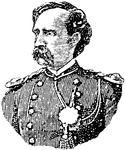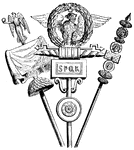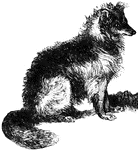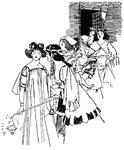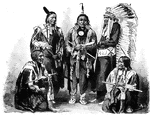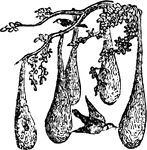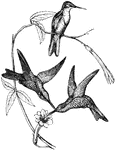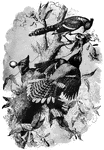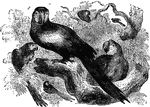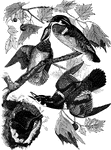
Major George Rogers Clark
(1752-1818) Surveyor and soldier of the Revolutionary war. Led a militia group in Kentucky and after…

Puritan Male
The Puritans were a group of English Reformed Protestants in the 16th and 17th centuries who sought…

Falcon
Falcons are a group of birds of prey that vary in size from the falconet to the gyrefalcon. They can…

Tiger Beetles
Beetles form a large group of insects that number over 300,000 species. They all have hard wings which…

Caterpillar Hunter Beetles
Beetles form a large group of insects that number over 300,000 species. They all have hard wings which…
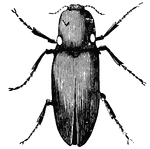
Lightning Spring Beetles
Beetles form a large group of insects that number over 300,000 species. They all have hard wings which…

Weevil
Beetles form a large group of insects that number over 300,000 species. They all have hard wings which…

Love birds
Love birds are the smallest of this group; their plumage varies in shades according to the climates.…
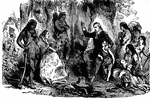
Elliot, Apostle of the Indians, Preaching to His flock
John Elliot preaching to a group of Native Americans.

Duryea's Zouaves at Big Bethel Brining Off Grebel's Body
Group of soldiers escorting a corpse on a wagon.
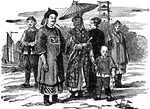
China, (People)
Group of Chinese people, Mandarin, Lady, Boy, Female Attendant, Soldier and Bird's-nest Seller.

Squid
The squid is the best example of the cephalopod group. It is abundant along the Atlantic coast. Squids…

Mackerel
The perch is typical of a large group of fishes, all of which have spiny rays. The perch is widely distributed…

Lungfish
In the lungfish, the development of the air bladder as a lung is much more complete than others in the…
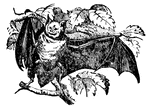
Horseshoe Bat
Bat, one of the group of wing-handed, flying mammals, having the forelimb peculiarly modified so as…

Tubularia
Tubularia are members of the Protista kingdom. The pipe-coralline (Tubularia) is an example of another…

Sertularia
Sertularia are members of the Protista kingdom. It is an example of another group of the hyroid zoophytes,…

Sertularia
Sertularia are members of the Protista kingdom. It is an example of another group of the hyroid zoophytes,…
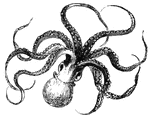
Octopus
Part of the cephalopod group. The name cephalopod is derived from two greek words which mean feet on…
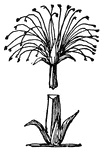
Papyrus
The papyprus is a frequent form in Egyptian ornament. Its straight, stiff triangular stem with four…
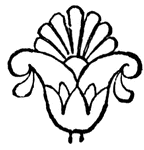
Lotus-Palmette with Tabs
Lotus-palmette with tabs consists of a group of diverging leaves or petals springing from between two…

Storming of Fort Donelson
"Storming of Fort Donelson- decisive bayonet charge of the Iowa Second Regiment on the Confederate intrenchments…
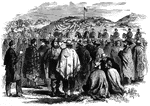
Confederate Prisoners
"Group of Confederate prisoners captured at Fort Donelson, on the morning after the surrender, clothed…

Kentucky Raid Rally
"The Confederate raid into Kentucky--excitement at Convington--gathering of armed Federal citizens at…

Grand Skedaddle
"The 'Grand Skedaddle' of the inhabitants from Charleston, S. C., when threatened by an attack from…
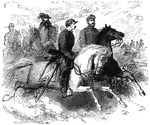
Federal Cavalry Leaders
"Federal Cavalry Leaders. Generals Pleasonton, Bayard and Colonel Percy Wyndham making a reconnoissance,…

War in Virginia
"The war in Virginia- officers and men of Meade's army discovering unburied Federal dead on the old…
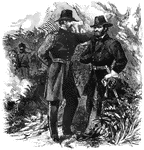
Battle of the Wilderness
"An incident of the Battle of the Wilderness. Lieutenant General Grant and Major General Meade in consultation,…
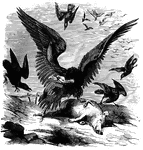
Black Vulture
Black vulture (or carrion crow), genus Coragyps, about the size of a small turkey. This group…
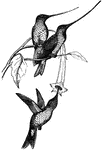
Hummingbirds
A group of humming birds with particularly long and narrow beaks, well-adapted for sipping nectar from…

Battle of the Wilderness
"The battle of the Wilderness, between General Grant and General Lee, May 5th and 6th, 1864. Our sketch…

Zouave Cadets
"Group of Ellsworth's Chicago Zouave Cadets. No military organization during the war was more brilliant…

Grallatores
A group of Grallatores, an order with characteristically long legs, well suited for wading in shallow…

Natatores
A group of birds of the order natatores, whose webbed feet are well adapted for propelling them on and…

Puffins, guillemots, the great northern diver, etc
A group of birds standing on a shore, with icebergs eveident in the background.
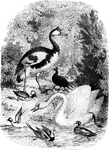
Group of Water Fowl
A group of water-fowl at a bank, with a fountain and pond visible in the background.
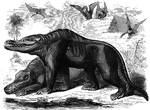
Megalosaurus and pterodactyls
A pair of megalosauruses, with a group of pterodactyls in the background.
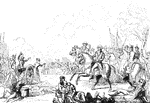
Monmouth
"The field of Monmouth. In the picture here given, the chief is seen most prominently on his white charger,…
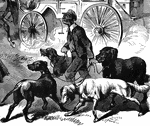
Man Walking Dogs
"Man walking dogs in the 'Grand Skedaddle' of the inhabitants from Charleston, S. C., when threatened…

Grand Skedaddle - Families with Luggage
"The 'Grand Skedaddle' of the inhabitants from Charleston, S. C., when threatened by an attack from…
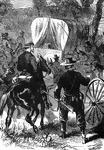
Grand Skedaddle - Detail of Wagons
"The 'Grand Skedaddle' of the inhabitants from Charleston, S. C., when threatened by an attack from…
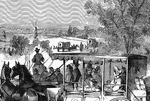
Grand Skedaddle - Horse-drawn Carriage
"The 'Grand Skedaddle' of the inhabitants from Charleston, S. C., when threatened by an attack from…
